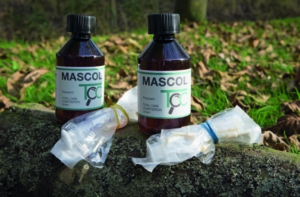Every dairy farmer is confronted with the phenomenon of udder inflammation at some point in his life. A difficult matter, because the cow and production come under pressure at that moment… In some cases, the milk may not enter the milk tank, because of the high cell counts it can contaminate the others. Another risk is that during treatment with antibiotics, antibiotics will enter the milk and thus the milk tank. So with such a treatment, the milk is also not allowed to enter the tank. This is usually thrown away…
Udder inflammation is of course a broad concept and has several forms. The best known types are mastitis, E. coli and Staph. aureus. The Staph variant. aureus is also the most difficult to treat. For example, with aureus it is also possible that the cow appears to be healthy again. The Aureus bacteria can resurface in no time, because it can “hide”. Even the antibiotics are having a hard time getting to grips with the Aureus.
Mascol has already proven itself in inflammatory cases caused by mastitis and E. coli bacteria. Therefore, we have already established the product in our domestic market in the Netherlands, see a good and positive development in Germany and even though we are still not present in the markets such as America, Canada and England we are exploring various possibilities to penetrate these markets and get our product closer to the farmers.
However, Staph. aureus is also a difficult case for Mascol.
Rinagro wouldn’t be Rinagro if we didn’t look further into the possibilities for further product development. For example, our lab assistant started a study into how we could optimize Mascol in such a way that we can also tackle aureus. This took some time, but there is now a new formula. This formula is now being applied here and there and monitoring how it works.
During the last staff meeting in April, the first experiences from the field were asked. So far, only 2 of our colleagues were able to provide initial feedback, because the new variant had only been on the market for a short time and was therefore practically not used.
The new variant has so far shown that it worked faster and better in “normal” cases. This is hopeful! We call it normal cases, because most farmers logically do not have it investigated which bacteria actually causes the symptoms of the disease, but they want the animal to be healthy again as soon as possible.
Experiences will be reported and collected more and more over time. Then our laboratory technician can say more about the results.
